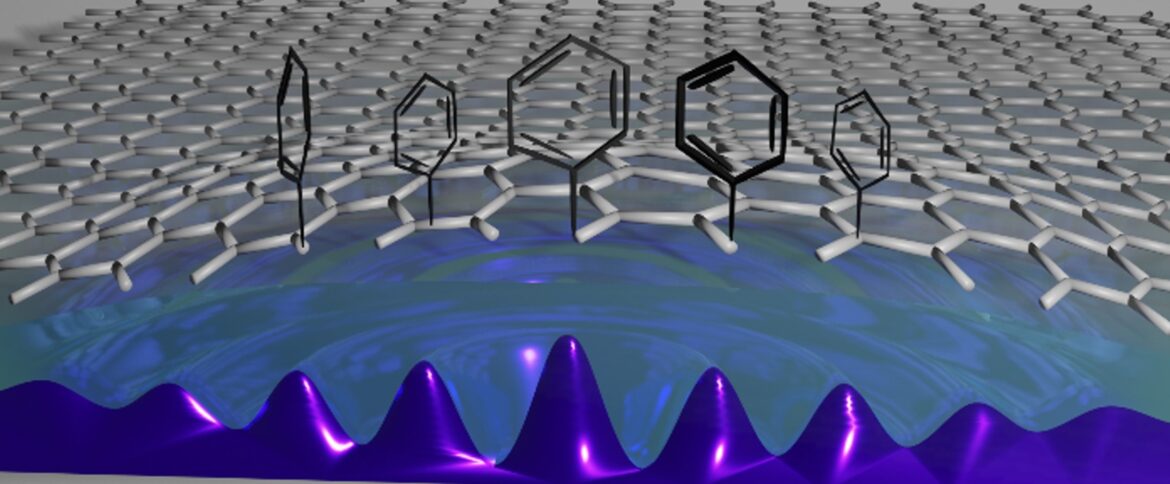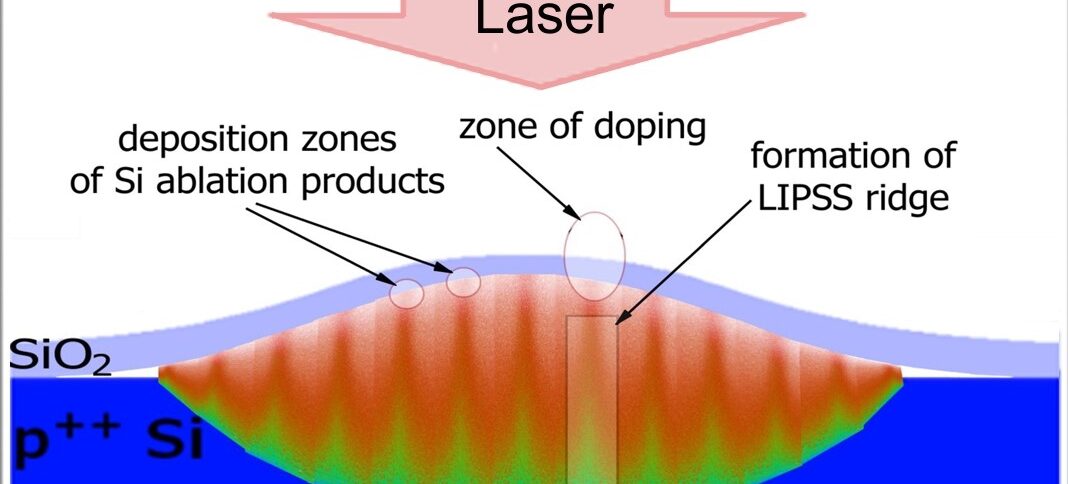The international team of researchers from the HiLASE Centre, Jaroslav Heyrovsky Institute of Physical Chemistry in Prague, Czech Republic and the Center for Physical Science and Technology, Vilnius, Lithuania has discovered a unique way of producing periodic distribution of functional groups on monolayer graphene. Periodic patterns of covalent functionalization on 2D materials can lead to periodic potentials in the atomic monolayer; however, creating such superstructures is very challenging.
In their work, the scientists have explored a smart method of periodic modulation of graphene chemical reactivity. They created laser-induced periodic surface structures (LIPSS) on silicon wafers with thermally-grown oxide layers. It has been found that the LIPSS imprint their periodicity to the reactivity of the monolayer graphene placed on such wafers via modulation of its local doping level.

The periodically-doped graphene can open new horizons for fabrication of electronic devices at nanoscale as even subtle changes in electronic characteristics of such a nanosystem may lead to dramatic effects in its properties. The developed method is clean, straightforward and scalable with high spatial resolution. These findings can also be transferrable to other 2D materials, in order to design anisotropic surfaces for further advanced applications in optoelectronics, smart coatings or cell biology experiments.
A joint paper on this subject has been recently published in a prestigious journal Nano Research (Impact Factor of 8.515) of Springer Nature (co-publication with Tsinghua University Press).









